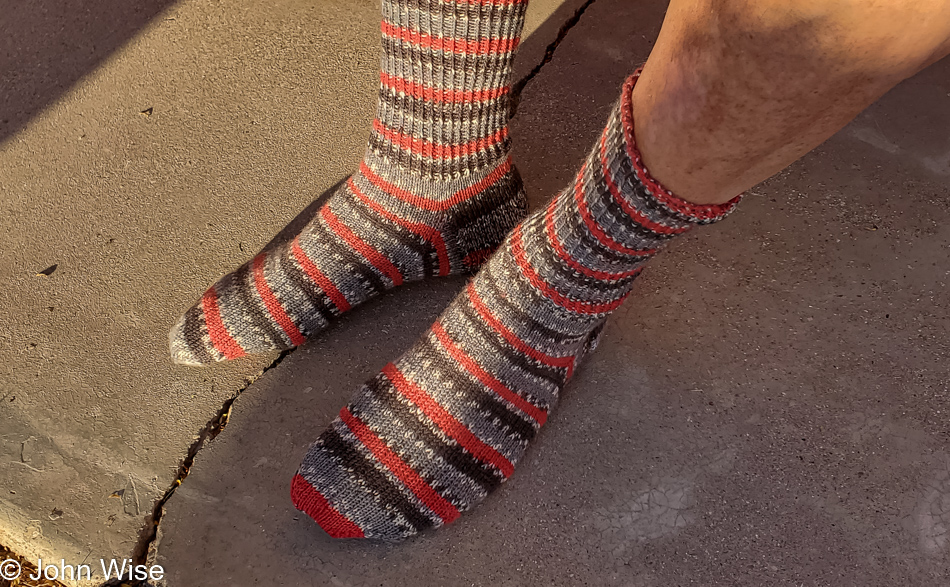
The great luxury of new handmade socks inspires a wonderful sense of appreciation that these were made just for me, for my feet alone. As if such a gift could be graded, these have a special story that catapults them into their own category of impression. You see, this yarn from West Yorkshire Spinners in Britain was sent to Caroline just before Christmas by her friend Claudia, who lives in Germany. The first bit of yarn was cast on back in January, and I noted that she was working on them while we were at the Getty Villa in Pacific Palisades, California. The knitting continued on our subsequent trips to Death Valley, the Grand Canyon, Douglas, Arizona, Mexico City, and San Cristóbal, once again in Los Angeles, and now here in Ajo, Arizona, where they are being declared finished.

Indecision is the key to flexibility was the adage we learned from boatman Bruce Keller while rafting the Colorado River a dozen years ago, and as this trip south was packed with a lot of indecision, we are now practicing our flexibility by pointing the car northwards early in the morning instead of doing anything more down in a part of the state where there’s little to do, not in Ajo and not in Why.
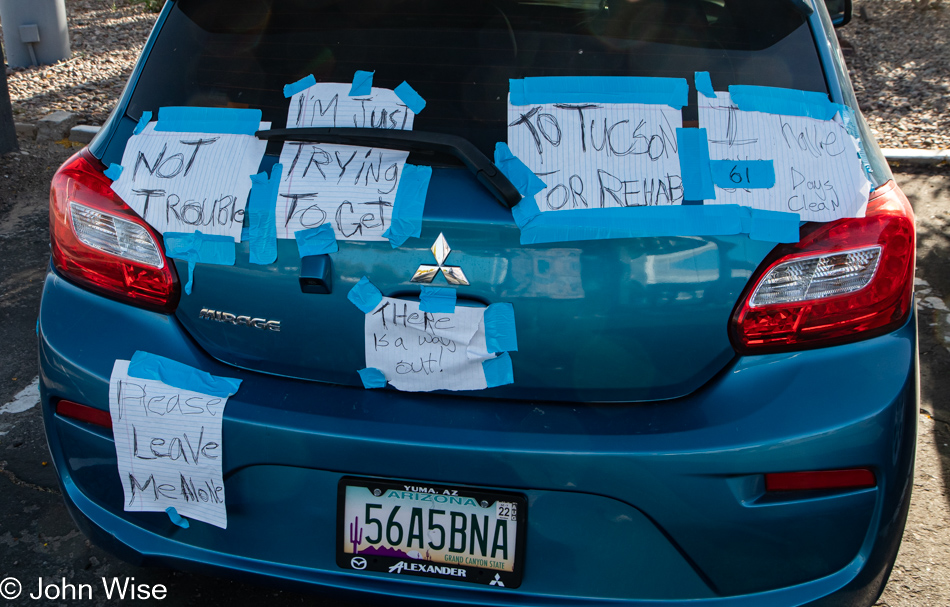
Arizona Road 85 mostly passes through the Cabeza Prieta Wildlife Refuge and the Barry M. Goldwater Range used for bombing practice, with very little opportunity to take in the sites on the way to Gila Bend.
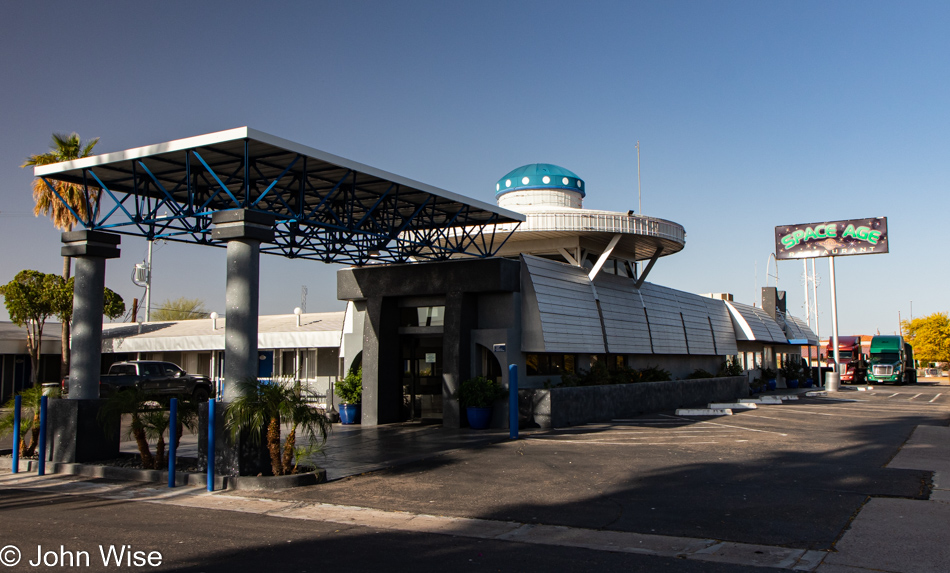
We were okay with that straight drive-through as we were on our way to getting a greasy breakfast, the kind we could only get on the way through the lesser populated areas of America. Sure, we could go to Denny’s, IHOP, or Waffle House in Phoenix and other big cities, but those options would kill us if they were part of our routine. We’ve passed the Space Age Lodge and Restaurant many a time but have never stopped; that all changed this morning. Breakfast was every bit of greasy we could have hoped for, with two weak-looking eggs, a small mound of hash brown potatoes, toast, and a side of bacon for me. Flavorless coffee rounded everything out, adding all the happiness to a day we needed.
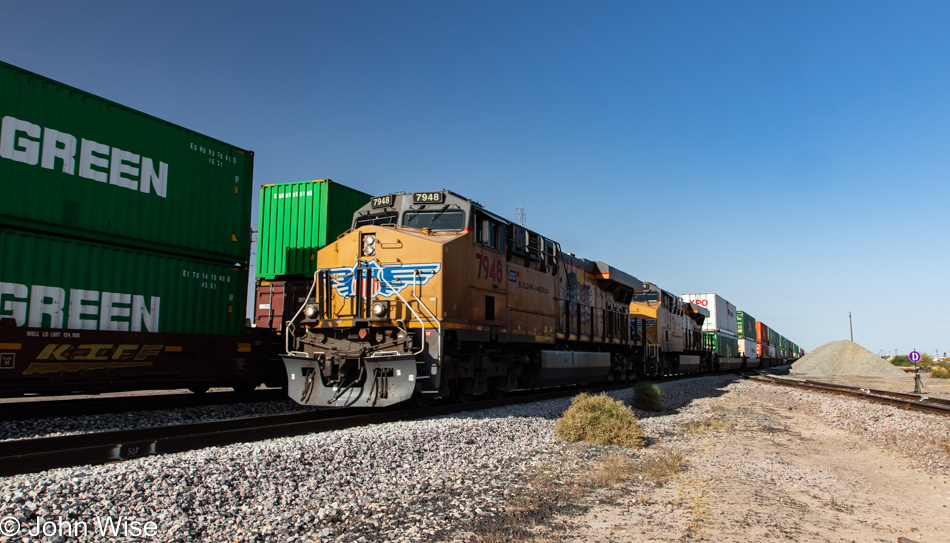
Out behind the restaurant are train lines, and on one of the tracks, a bunch of cars are traveling west. In the distance, I could see another train traveling east right at me; this obviously demanded that we hang out and watch these giants pass.

This road was one of two options I’d entertained traveling on prior to our departure on Friday. One direction out of Ajo would take us west and then north for a visit to the Kofa National Wildlife Refuge, and then there was Old Highway 80 out of Gila Bend, which was made nearly redundant after AZ-85 (mostly parallel to this old road) was opened in 1977.
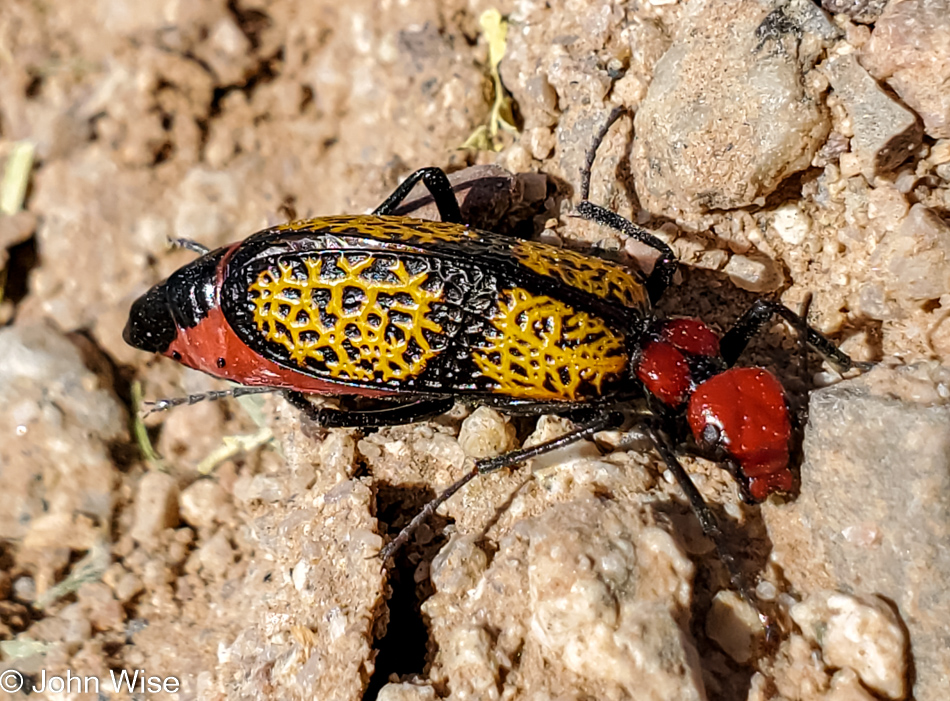
As we were out here looking at owls, hawks, and various other birds, we came across this mean-looking ant-like thing that Caroline thought was a crazy-looking ant, but on further examination, I was able to determine that this beast was an iron cross blister beetle. My wife got lucky regarding this encounter as she skipped picking it up (she, in fact, picks up a lot of creepy crawlies to get a closer look or better photo) because this particular insect will hurt people. It’s not only toxic to animals, but it’s toxic to us too, not that Caroline snacks on the bugs she picks up, but in this case, there’s a substance on their legs that causes our skin to blister…hence the blister beetle reference.
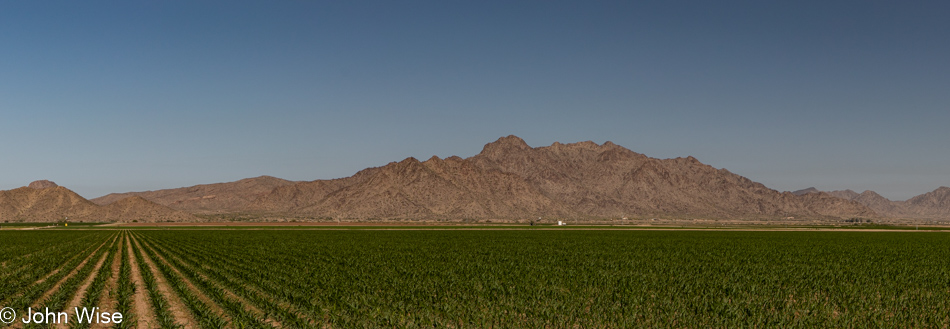
We don’t get a lot of rain in AZ, but apparently, we can pump enough groundwater that for one hundred years, we’ve been irrigating desert lands to grow corn, cotton, citrus, melons, and a bunch of other foodstuffs that allow for these beautiful contrasts between dark greens, the desert, and deep blue sky.

What we thought was a wildfire turned out to be a controlled burn, a stinking, eye-irritating, scorching of some earth that is understood by some and lost on us…

Lost on us until we reach this Gillespie Dam Bridge and realize that the burnoff of surrounding brush works to protect this 95-year-old truss spanning the Gila River.
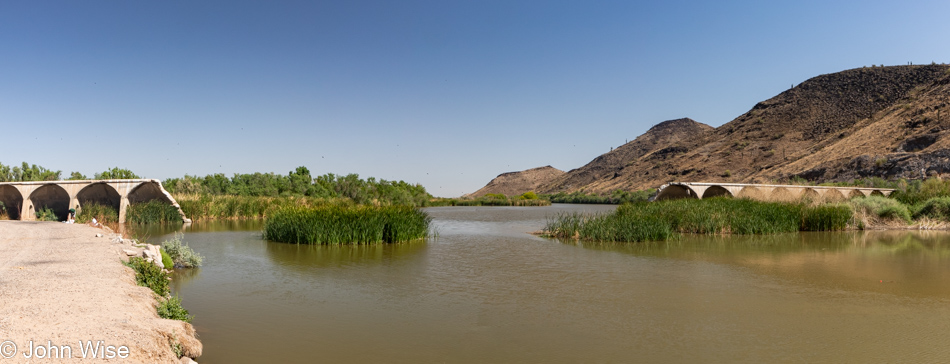
“River” seems relative as the Gila kind of just stops here over on my right. I suppose that when monsoon season arrives, the waters likely move beyond the remnants of the broken Gillespie Dam and find their way to the spillway still remaining here at the section of the dam pictured below. As for the pooling waters, they are actively being pumped out and sent to irrigation canals.

The ground behind Caroline on the left is still smoking from the fires that obviously burned earlier in the day. Not only is there water in front of us, but behind the wall and in those small coves is even deeper water, and it is back there that we are listening to fish splash about, as are a couple of nearby fishermen trying to entice them to join the party in their ice-chest sitting nearby.

While the dam failed back in January 1993 due to an extreme flooding event occurring in Arizona that year, the bridge, while damaged, survived and was subsequently repaired. Well, our day is turning out to be quite interesting.
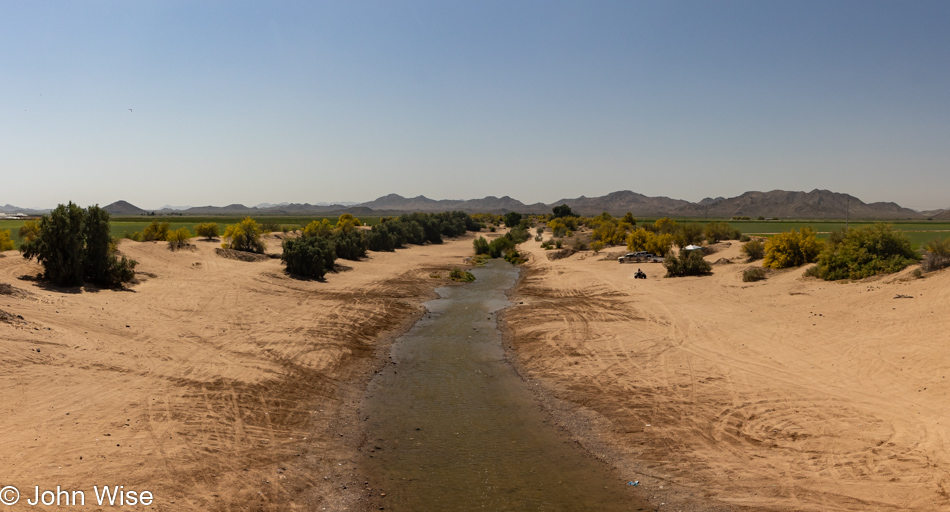
Strike another positive impression into our scorecard as here at a Hassayampa River crossing we are seeing water running over the desert. In our 27 years in Arizona, we can’t remember seeing water in the Hassayampa, though as I write this, I have this vague notion that we once saw water running through a broad expanse of the river bed where it passes underneath Interstate 10 west of Phoenix. [Note: The Hassayampa mostly flows underground. There are a few areas that have perennial surface flows, but they are upstream near Wickenburg. Water in this part of the riverbed is a seasonal occurrence. – Caroline]
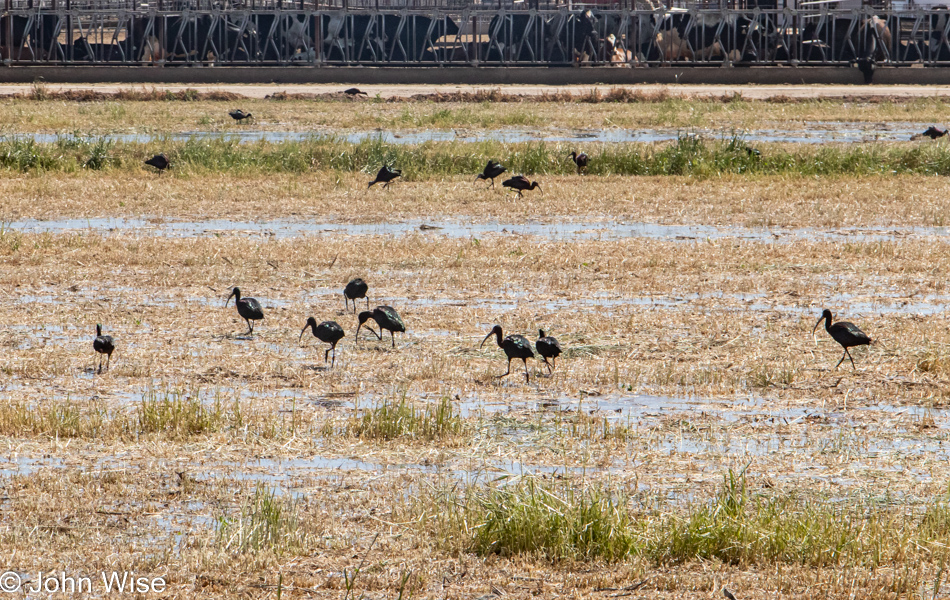
As we passed a cattle farm near Arlington, there was a field being flooded, and at first glance, it looked like common blackbirds poking around for food in the water.

Of course, I failed to bring the long lens once again as we ventured into nature, and now I’m suffering by not being able to capture a close-up image of these birds. It turns out that they are Glossy Ibis. Look closely; they have a rainbow of hues shining off their feathers. They were first seen in Arizona just 19 years ago, so they are not common at all. Also seemingly not common within our own species is this ability to be easily entertained by such ventures into places of relative nothingness.